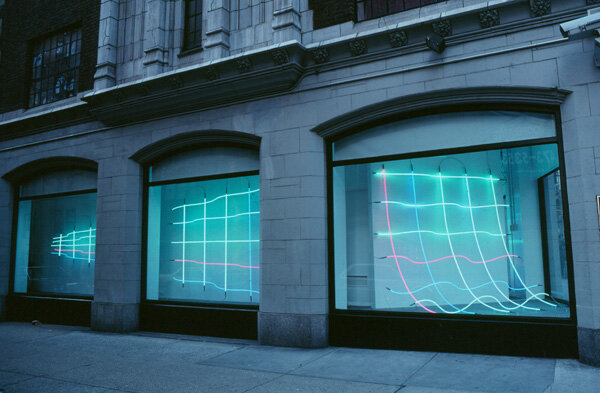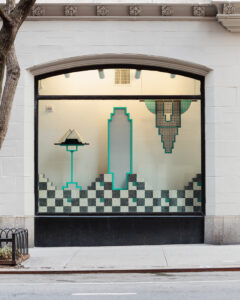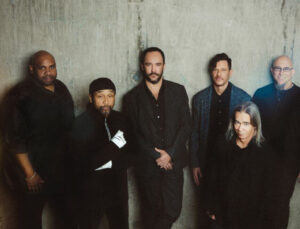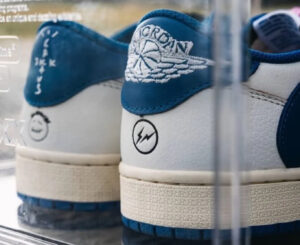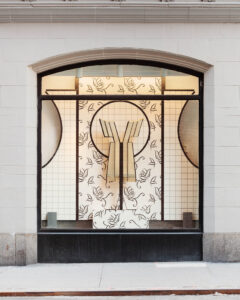
(January 18 – March 9, 2025)
Curated by NYU’s Costume Studies Master’s candidates, “Framing Fashion Fantasies: Windows Into…” is a thought-provoking exhibition that critically examines the fantasies constructed and perpetuated by the fashion industry. Through its interdisciplinary approach and diverse array of exhibits, the display invites viewers to explore how fashion narratives intersect with cultural, social, and historical identities. Presented in the unique Broadway Windows space, this exhibition is accessible to anyone walking by, offering a truly public engagement with themes that impact everyday life and personal expression.
An Overview of the Exhibition
Fashion has long been a medium for storytelling. Designers, brands, and cultural institutions craft dreams through fabric and style, constructing visions that often reflect or challenge societal ideals. In this exhibition, NYU’s Costume Studies Master’s candidates delve into these layered narratives, deconstructing the various ways fashion serves as a conduit for both personal and collective fantasies.
The exhibition is structured around six core themes: nostalgia, otherness, escapism, the American dream, myth, and the monster. These themes are interconnected and overlapping, reflecting the complexity of how fashion intertwines with societal constructs, memory, and imagination. By juxtaposing archival objects, contemporary runway ensembles, and mass-produced garments spanning nearly a century, the exhibition not only highlights fashion’s evolving aesthetic but also critiques its enduring power to influence identity and social values.
Nostalgia: The Allure of the Past
Fashion’s cyclical nature often invokes a sense of nostalgia, with trends from bygone eras resurfacing in modern collections. Nostalgia is not just a longing for the past but a curated and romanticized version of it. In the exhibition, archival garments from the 1920s through the 1980s are displayed alongside modern reinterpretations by contemporary designers. For instance, a flapper dress from the Jazz Age is paired with a 2023 runway piece that reimagines the era’s iconic fringes and silhouettes.
Nostalgia in fashion often intersects with a collective desire to return to a simpler or more glamorous time, but it also reveals the selective memory of the industry, which tends to highlight the beauty of the past while overlooking its complexities and inequalities. The exhibition encourages viewers to question what is left out of these nostalgic visions.
Otherness: Fashion and the Exoticized Gaze
The theme of otherness addresses how fashion constructs and commodifies identities that are perceived as different or exotic. The exhibition explores how colonialism, globalization, and cultural appropriation have shaped the fashion industry’s portrayal of non-Western cultures. Traditional garments from Africa, Asia, and Indigenous communities are juxtaposed with runway pieces that draw “inspiration” from these cultures, raising questions about authenticity, respect, and exploitation.
This section also examines how fashion perpetuates stereotypes about race, gender, and sexuality. For example, garments designed for the queer community or marginalized groups are analyzed to show how they both challenge and conform to societal expectations.
Escapism: Fashion as a Portal
Fashion often serves as a means of escapism, allowing individuals to step into a fantasy world or adopt an entirely different persona. This section of the exhibition features extravagant haute couture pieces, fantasy-inspired runway designs, and garments associated with costume play (cosplay).
From Alexander McQueen’s otherworldly designs to the fantastical gowns of Giambattista Valli, the escapist appeal of fashion is palpable. However, the exhibition also critiques this phenomenon, questioning whether escapism in fashion creates a temporary refuge from societal pressures or perpetuates unattainable ideals.
The American Dream: Dressing for Success
The American dream, with its promise of upward mobility and self-reinvention, has been a central theme in fashion. The exhibition includes garments that reflect the aspirations and realities of this ideal, such as the iconic business suits of the 1950s and the power suits of the 1980s, alongside contemporary pieces that reinterpret these motifs for a new generation.
This section also highlights how fashion has historically been a tool for expressing class and status. The juxtaposition of luxury brand pieces with mass-produced knockoffs underscores the contradictions inherent in the dream of accessibility and exclusivity.
Myth: Fashion as Storytelling
Mythology has been a significant influence on fashion, with designers frequently drawing from ancient stories and archetypes to create garments imbued with symbolism. The exhibition showcases pieces inspired by Greek and Roman mythology, as well as modern interpretations of mythical figures such as fairies, mermaids, and goddesses.
This section explores how these myths are reinterpreted to reflect contemporary issues, such as feminism and environmentalism. For example, a gown inspired by the Greek goddess Demeter might be reimagined to address climate change, highlighting the fragility of nature.
The Monster: Subverting Beauty Standards
The final theme, the monster, examines how fashion challenges traditional notions of beauty and perfection. Designers like Rei Kawakubo of Comme des Garçons and Hussein Chalayan are featured for their avant-garde creations that push boundaries and defy expectations.
This section also includes garments that play with deformity, asymmetry, and exaggeration, questioning societal standards of beauty and normalcy. By embracing the grotesque and the unconventional, fashion becomes a medium for empowerment and self-expression.
The Curatorial Process
The curators of “Framing Fashion Fantasies: Windows Into…” approached the exhibition with a focus on interdisciplinary research and collaboration. Drawing from historical archives, interviews with designers, and academic texts, they crafted an exhibition that balances scholarly analysis with visual appeal.
The Broadway Windows space itself played a significant role in shaping the exhibition. As a public-facing gallery, it invites passersby to engage with the displays in an informal, spontaneous way. This accessibility aligns with the curators’ goal of making fashion studies more inclusive and less elitist.
Reception
The exhibition has sparked widespread discussion among academics, artists, and the general public. Its critical approach to fashion’s role in shaping cultural narratives resonates with contemporary debates about sustainability, inclusivity, and the ethics of the fashion industry.
Visitors have praised the exhibition for its ability to make complex ideas accessible and engaging. The use of diverse mediums—from traditional garments to digital projections—creates a multisensory experience that appeals to a wide audience.
Impression
“Framing Fashion Fantasies: Windows Into…” is more than an exhibition; it is a conversation about the power of fashion to shape, reflect, and challenge our perceptions of the world. By exploring themes of nostalgia, otherness, escapism, the American dream, myth, and the monster, the exhibition offers a comprehensive look at the ways fashion constructs and deconstructs fantasies. Its innovative use of the Broadway Windows space ensures that this dialogue reaches a broad and diverse audience, making it a significant contribution to both the art and fashion worlds.
Focus Keyphrase
Framing Fashion Fantasies Exhibition
1 Related Key Phrase
Fashion industry narratives
4 Synonyms
Fashion storytelling
Fashion illusions
Costume design fantasies
Fashion and cultural identity
120 Characters
Explore “Framing Fashion Fantasies,” an NYU exhibition analyzing themes like nostalgia, escapism, and identity in fashion.
Alt Text
Display window with archival garments, haute couture pieces, and fashion-inspired art, showcasing themes of fantasy and culture.
Breadcrumb Titular
Home > Exhibitions > Framing Fashion Fantasies: Windows Into…
No comments yet.

